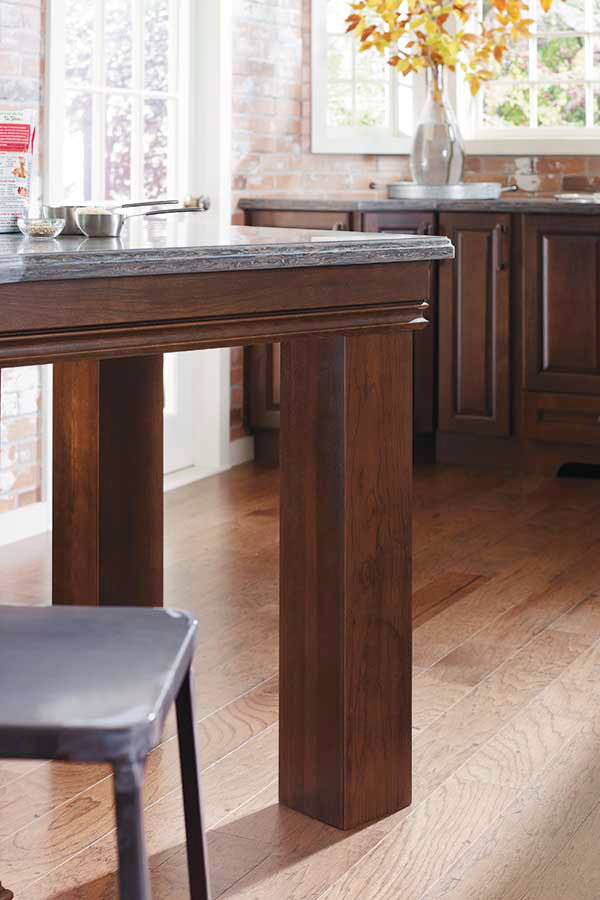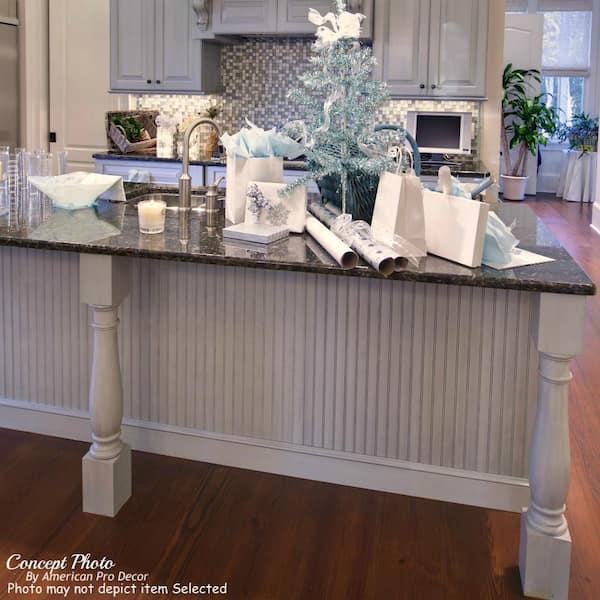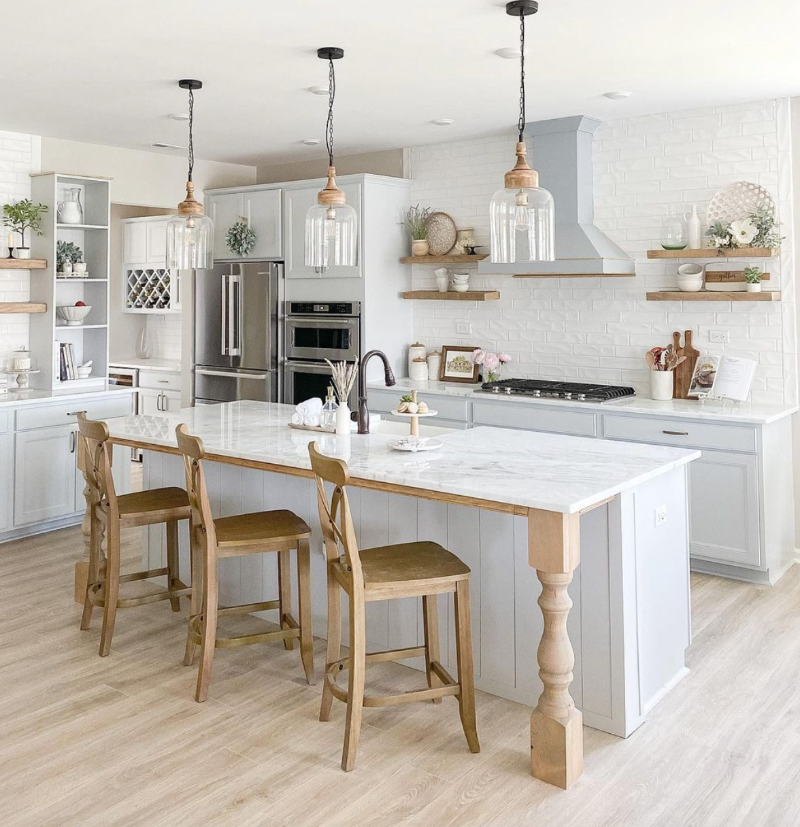Special Kitchen Island Legs for a Personalized Kitchen Look
Special Kitchen Island Legs for a Personalized Kitchen Look
Blog Article
Crucial Tips for Picking the Perfect Table for Your Kitchen Area
Choosing the ideal table for your cooking area is greater than just a matter of taste; it necessitates a complete understanding of your area and needs. Begin by measuring your readily available area to guarantee sufficient clearance for movement. The form of the table plays an essential function; while rectangular tables match larger locations, rounded ones foster intimacy, and extendable alternatives use flexibility. Product option is equally crucial, with woods supplying sturdiness and glass financing a contemporary touch. Lastly, the table ought to integrate with your kitchen area's aesthetic appeals and accommodate your household conveniently. What other aspects might influence this vital decision?
Action Your Space
Selecting the suitable table begins with a precise analysis of your available space. This foundational step ensures that the table not only fits comfortably within the space however also complements the overall design and performance of your dining area. Begin by measuring the dimensions of the space, thinking about entrances, home windows, and any kind of existing furniture. This will certainly help you figure out the optimum permitted dimension for your table.
Take into consideration the circulation of activity around the table. It is crucial to leave ample space for chairs to be pulled out and for people to move around the table without blockage. A basic general rule is to enable at the very least 36 inches of clearance from the side of the table to the nearby wall or furniture. This makes certain simplicity of access and comfort throughout meals.
Furthermore, think of the variety of people you generally captivate and whether you need added space for visitors. Going with an extendable table can give versatility, permitting you to accommodate differing numbers of restaurants. By properly determining your room, you prepared for picking a dining table that improves both the aesthetic appeals and capability of your dining location.
Choose the Right Forming

On the other hand, round tables are superb for smaller kitchen areas or intimate gatherings, as they promote discussion by allowing everybody to encounter each other. They likewise give a sense of comfort and can fit well in tighter rooms due to their lack of sharp edges. Oval tables offer the very best of both globes, incorporating the length of rectangle-shaped tables with the intimacy of round ones, making them flexible for numerous setups.
Square tables are another choice, specifically matched for square-shaped rooms. They create a modern-day and symmetrical look, fostering an equal eating experience for all seated. Nonetheless, they might be much less practical for larger gatherings unless they come with extensions. Ultimately, the shape you select must line up with your area measurements and lifestyle to guarantee both type and function.
Product Considerations
When picking a dining table, product considerations are critical in establishing the table's sturdiness, maintenance needs, and overall aesthetic. Wood is a classic selection, using ageless appeal and robustness. Woods like oak, walnut, and mahogany are specifically sturdy, though they can be expensive. kitchen island legs. Softwoods, such as yearn, are much more affordable yet may be prone to scrapes and dents.
Glass-topped tables supply a modern, streamlined look and can make an area appear bigger because of their transparency. Nonetheless, they require constant cleansing to stop spots and fingerprints. In addition, solidified glass is advised for its added stamina and safety and security.

Lastly, composite products like MDF (Medium-Density Fiberboard) or plywood are budget-friendly choices. These materials can mimic the look of strong wood yet might not provide the same longevity. They are usually less complicated to tidy however can be susceptible to water damages otherwise appropriately sealed.
Ultimately, the selection of product ought to align with your kitchen area's design, your way of living requires, and your budget restraints. (kitchen island legs)
Seats Capacity and Comfort
Just how do you establish the appropriate seats capacity and convenience for your dining table? This important step entails analyzing both the physical area readily available in your kitchen area and your house's practical demands. Begin by measuring your kitchen area to make visit our website certain the table fits conveniently, permitting at the very least 36 inches of clearance around it for very easy movement. Think about the variety of individuals who commonly dine with each other, as this will certainly influence the table size. For a family members of four, a rectangular table of 48 inches long or a round table with a 48-inch size is usually adequate.
Convenience is just as important. The height of the table must preferably be around 30 inches, giving a balanced ergonomic stance for seated diners. Chairs must sit elevation of 18 to 20 inches to ensure a comfortable dining pose. In addition, consider the chair style; helpful back-rests and upholstered seats can enhance dining comfort substantially, specifically throughout long term dishes.
Design and Appearance
Picking an eating table that fits your style and visual appeal involves balancing individual preference with the existing decoration of your dining area. The table is commonly the focal point of the kitchen area, and its style ought to complement the overall motif of the room. Whether your cooking area boasts a modern, minimal appearance or a rustic, farmhouse beauty, the table you choose need to integrate with these elements to develop a natural and inviting atmosphere.
Take into consideration products very carefully; wood supplies a classic charm and can range from abundant mahogany for a typical appearance to lighter oak for a contemporary feel. Steel and glass tables, on the various other hand, can introduce a smooth, industrial edge to your kitchen area. Do not overlook the table's form-- rectangular tables are classic and functional, while round and oblong options can cultivate a more intimate eating experience.
Furthermore, pay attention to coatings and details. A troubled surface might include character and heat, whereas a glossy surface area can contribute to a tidy, contemporary aesthetic. Eventually, your useful reference dining table must not only healthy perfectly right into your kitchen's layout but additionally show your personal design, boosting the space both functionally and aesthetically.
Conclusion
Finally, selecting the ideal table for a cooking area requires mindful assessment of room, shape, material, seating capacity, and visual harmony. Making certain a minimal clearance of 36 inches helps with comfy activity, while the selection of shape enhances spatial dynamics. Product selection effects longevity and design, making it important to line up with the cooking area's total aesthetic. Ultimately, a well-chosen dining table promotes an inviting ambience and suits the house comfortably, therefore improving the eating experience.

When choosing an eating table, product considerations are extremely important in identifying the table's durability, upkeep needs, and general aesthetic. For a household of four, a rectangle-shaped table of 48 inches long or a round table with a 48-inch size is generally sufficient.
Don't ignore the table's form-- rectangle-shaped tables are flexible and traditional, while round and oblong alternatives can cultivate an extra intimate eating experience. kitchen island legs.
Report this page